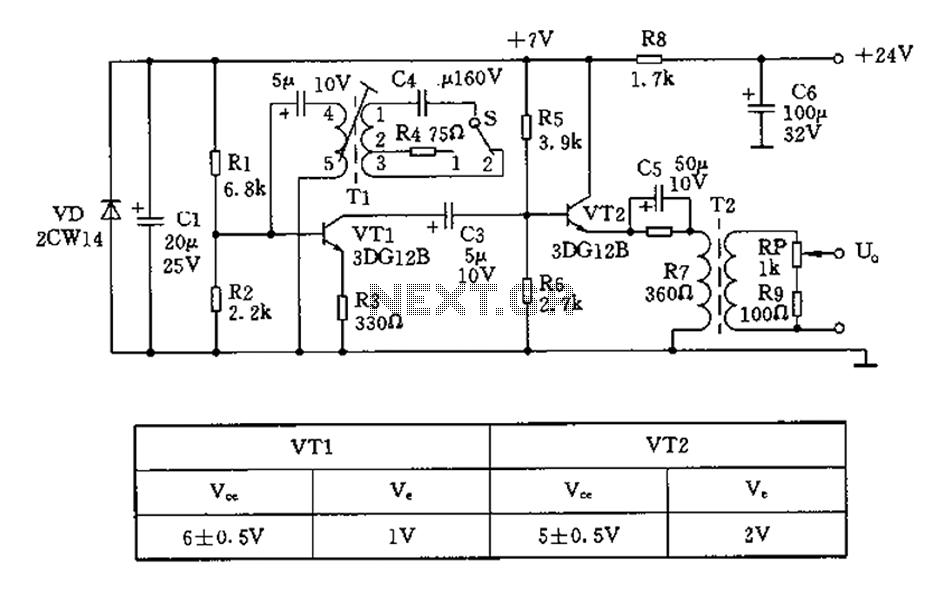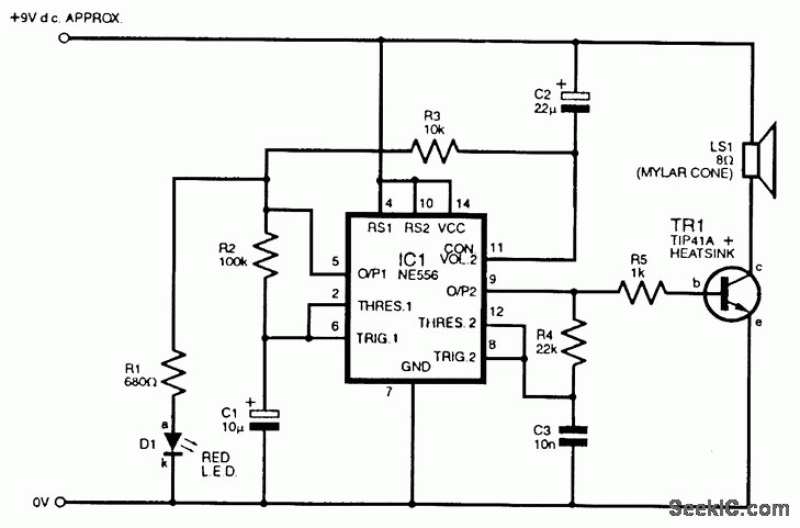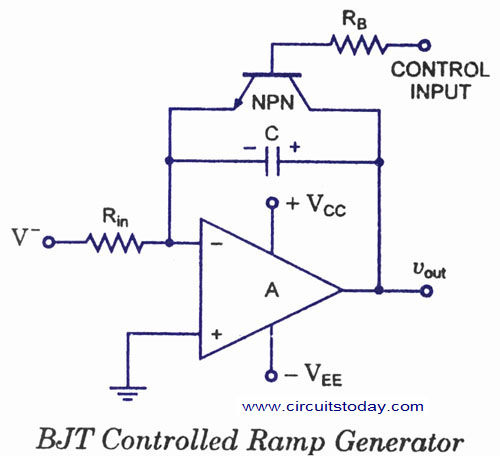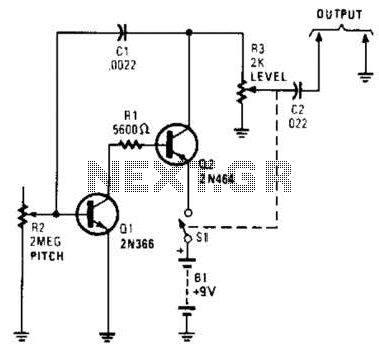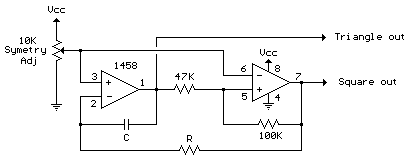
The 25-30kV DC Generator
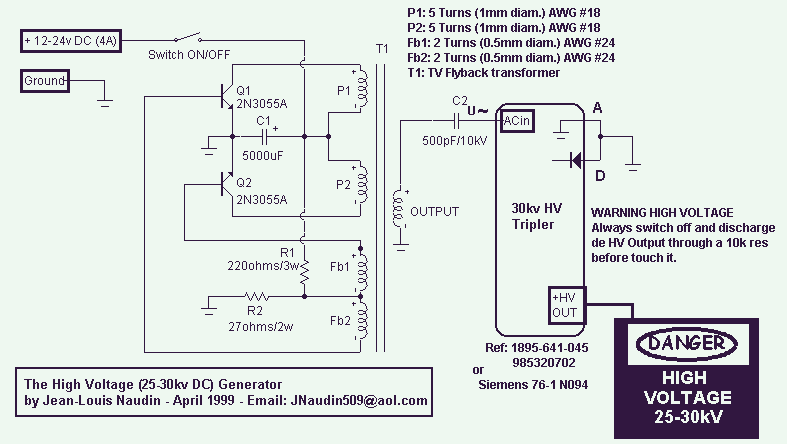
This High Voltage power supply is able to generate up to 25-30kV DC Output from a 12-24v DC input. With a fully adjustable DC input power supply (0-24V/4A), it is possible to adjust the HV output between 5 to 30kV. This HV power supply uses a common flyback driver circuit with two 2N3055 power transistors as a push-pull oscillator. A common flyback transformer from an old TV/monitor can be used; the transformer HV output is connected to a 30kV Voltage tripler which is commonly used in all color TV monitors. More: This HV Power supply is a very useful tool for your lab and this can help you to test by yourself the EHD-Flying Saucer.
The described high voltage power supply operates on the principle of a flyback converter, which is a type of DC-DC converter. This circuit is designed to step up the voltage from a low DC input (12-24V) to a much higher output voltage (up to 30kV). The key components of this circuit include a flyback transformer, two 2N3055 transistors configured in a push-pull arrangement, and a voltage tripler circuit.
The flyback transformer is crucial for energy storage and voltage transformation. When the transistors switch on and off, they create a magnetic field in the transformer. As the magnetic field collapses, it induces a high voltage in the secondary winding of the transformer. The output of the transformer is then fed into a voltage tripler circuit, typically composed of diodes and capacitors, which further increases the voltage to the desired level.
The adjustable DC input power supply allows for fine-tuning of the output voltage. By varying the input voltage from 0 to 24V at a maximum current of 4A, the user can control the high voltage output. This flexibility is essential for various applications, including experiments in electrohydrodynamics (EHD) and other high voltage research.
Safety precautions are paramount when working with high voltage circuits. Proper insulation, protective enclosures, and safety gear should be employed to prevent electric shock or equipment damage. Additionally, the circuit should be tested and calibrated using appropriate measuring equipment to ensure accurate voltage output and stability.
Overall, this high voltage power supply circuit serves as a versatile tool for experimentation and testing in laboratory settings, particularly for applications requiring high voltage generation.This High Voltage power supply is able to generate up to 25-30kV DC Output from a 12-24v DC input. With a fully adjustable DC input power supply (0-24V/4A), it is possible to adjust the HV output between 5 to 30kV. This HV power supply use a common flyback driver circuit with two 2N3055 power transistors as a push-pull oscillator.
A common flyback transformer from an old TV/monitor can be used, the transformer HV output is connected to a 30kv Voltage tripler which commonly used in all color TV monitors. This HV Power supply is a very useful tool for your lab and this can help you to test by yourself the EHD-Flying Saucer... 🔗 External reference
The described high voltage power supply operates on the principle of a flyback converter, which is a type of DC-DC converter. This circuit is designed to step up the voltage from a low DC input (12-24V) to a much higher output voltage (up to 30kV). The key components of this circuit include a flyback transformer, two 2N3055 transistors configured in a push-pull arrangement, and a voltage tripler circuit.
The flyback transformer is crucial for energy storage and voltage transformation. When the transistors switch on and off, they create a magnetic field in the transformer. As the magnetic field collapses, it induces a high voltage in the secondary winding of the transformer. The output of the transformer is then fed into a voltage tripler circuit, typically composed of diodes and capacitors, which further increases the voltage to the desired level.
The adjustable DC input power supply allows for fine-tuning of the output voltage. By varying the input voltage from 0 to 24V at a maximum current of 4A, the user can control the high voltage output. This flexibility is essential for various applications, including experiments in electrohydrodynamics (EHD) and other high voltage research.
Safety precautions are paramount when working with high voltage circuits. Proper insulation, protective enclosures, and safety gear should be employed to prevent electric shock or equipment damage. Additionally, the circuit should be tested and calibrated using appropriate measuring equipment to ensure accurate voltage output and stability.
Overall, this high voltage power supply circuit serves as a versatile tool for experimentation and testing in laboratory settings, particularly for applications requiring high voltage generation.This High Voltage power supply is able to generate up to 25-30kV DC Output from a 12-24v DC input. With a fully adjustable DC input power supply (0-24V/4A), it is possible to adjust the HV output between 5 to 30kV. This HV power supply use a common flyback driver circuit with two 2N3055 power transistors as a push-pull oscillator.
A common flyback transformer from an old TV/monitor can be used, the transformer HV output is connected to a 30kv Voltage tripler which commonly used in all color TV monitors. This HV Power supply is a very useful tool for your lab and this can help you to test by yourself the EHD-Flying Saucer... 🔗 External reference
